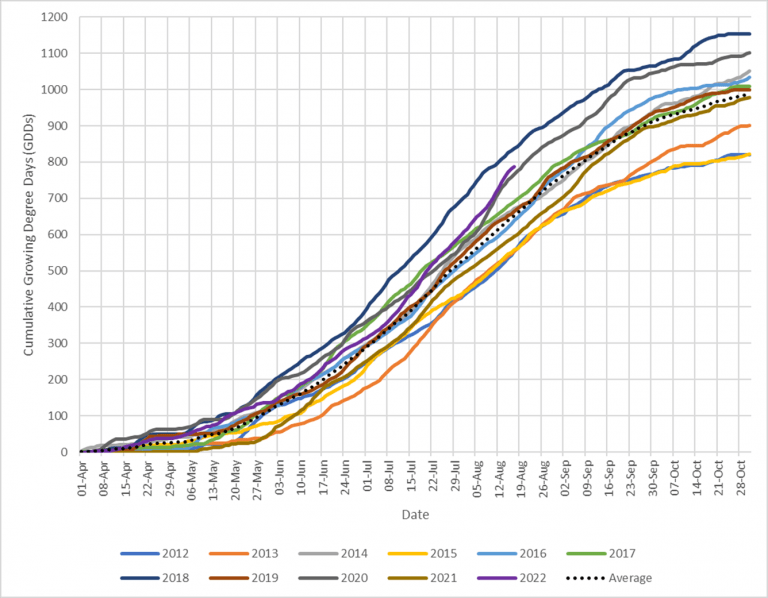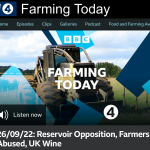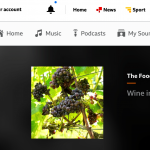Vintage 2022 report
Its looks like another ‘wow’ vintage for Vinescapes clients, with the potential for some exceptional quality wines. Hear what our team of Viticulturists, Winemaker and Viticulture Climatologist had to say….
Vintage 2022 summary:
- Harvest around 10 days early
- In August 2022 Norfolk leading the pack with of PAR (Photosynthetic Active Radiation)
- GDD graph compares 2018 with 2022
- Potentially more still wines, including reds from 2022 vintage
- Excellent yields hitting 5-10 tonnes per hectare
- Perfect weather for flowering and fruit set
- Heavy bunches
- Enviable quality – clean with optimal sugars and acids
- Unusual challenges for UK – water stress and sun burn!
- Unprecedented need for derogation of regs to permit acid additions!
- Exciting potential fruitfulness for 2023!
Here is what the vineyard team had to say:
“Vintage 2022 is similar to 2018, which was probably the UK’s best year, hot and dry with late rains and similar ripeness,” commented Joel Jorgensen, Managing Director and Viticulturist. “However, this year we did have some late frosts which set some vineyards back – compared to 2018 when there was an early start to the season with no late frosts.
“Harvest generally is about 10 days earlier than usual, especially for the sparkling varieties. The stills are early, but many growers have delayed harvest to allow further ripening in the fine weather conditions – this means we should see more still wines this year,” Joel added.
Yields
This year the yields have been very good across the board for all our clients, with around 5 to 10 tonnes per hectare – and particularly high where we had good conditions last year. One of clients’ blocks of PN375 hit 16 tonnes per hectare! I would have thinned it out but I never thought the bunches would reach 250g each!” said Joel.
“Generally, yields are very good due to our consistently good weather at flowering over 3-5 weeks for all varieties,” added Jonathan, Vineyard Manager.
Quality
“We are generally seeing great quality, with high sugars and low acids. There was a period in September when the sugars were lagging, but then they sky rocketed!” commented Joel.
I have been seeing really good Pinot Noir and Meunier at around 75 Oechsle and the pH at just over three,” commented Jonathan.
“I’m looking forward to one of our clients barrel fermented Bacchus which can in at 82 Oechsle and clean as a whistle!” Joel exclaimed.
Disease pressure
“There was some SWD in the last few weeks leading to harvest and this put pressure on some sites, especially those that avoid using insecticides. We use traps and monitor to anticipate – and some sites needed vigorous leaf stripping to open the canopy and make it less favourable. The higher humidity sites have seen some powdery mildew pressure, so these also needed to keep their canopies open and airy,” explained Jonathan.
“Disease pressures have generally been low, but vineyards that are shaded tend to retain humidity from morning dews and these saw some powdery mildew. Fortunately, the recent cold nights are reducing the insect pressures and keeping numbers lower,” added Jonathan.
“It could even be a year for Noble Rot in the vineyards that have the right climatic situations with early morning dews that dry during the day – however botrytised late harvest is sadly not yet a style seen much in the UK,” said Jonathan.
Challenges
“There were a few challenges; some vineyard had an early season frost, and then the high temperatures and dry conditions resulted in water stress, particularly in younger vines. Thinner skinned varieties, especially those exposed if leaf removal was too early ended up with sun burn – and the more severe sun burn resulted in shrivelled berries with those inside the bunch getting botrytis,” commented Joel
“Fortunately we have very good relationship with the contract labour providers,” Joel continued. “The only challenge has been the good weather and early harvest has meant that some vineyards have let the fruit hang for longer, delaying picking. At the same time the late sites have been early – so picking has been compressed into a hectic four weeks rather than six!”
Next year – vintage 2023
“This early harvest means that there is still time for the leaves to accumulate energy and transfer this as stored carbohydrates in the trunk and roots – meaning there will be plenty energy next year for bud break,” commented Joel.
“Potential fruitfulness for next season should be great – due to the warm, sunny and dry conditions during bud initiation, at around flowering time,” said Joel.
“Potential fruitfulness for next years is likely to be good,” agreed Jonathan, “but with a question mark over the effect of the drought on the vine physiology. This would have caused some slowing down which may influence bud fertility, in both young and older vines. However, this does depend on site, soil depth and moisture holding capacity. Fortunately, after the rain, shoot growth was able to restart,” he added.
“In vineyards where the canopy has been managed well the wood is showing good maturity – it’s clean and canes are hardening off. Good canopy management has also allowed good exposure of basal shoots,” added Jonathan
“I’m excited about next year!” said Joel.
“Every vintage is different and this has had some challenges, such as the drought, but on the whole it has been an easy year to grow grapes,” concluded Jonathan.
The winemaker’s point of view:
“Everything seems to be coming in perfectly for sparkling and some producers are getting the opportunity to achieve the ripeness needed for still wines,” commented Emma Rice, Consultant Winemaker.
“Sites that have been managed well have been able to pick at optimum ripeness for sparkling. However, some varieties maybe too ripe and nudging over 11% for sparkling at around 82 Oechsle – and could face problems with their second fermentations with these higher alcohols. This also means any chaptalisation additions need to be carefully assessed.
“Many vineyard that have achieved good ripeness have taken the opportunity to make still red, white or rose wines with their Champagne varieties this year. I think we will potentially see a good volume of rose!
“Acidification is not usually permitted in our geographic zone, but this year the WineGB Winemaking Technical Committee successfully applied for derogation, and permission was granted, so producers can add tartaric acid if needed. I expect some still producers will need to, maybe for Pinot Précoce and Bacchus. However, be aware that any mistakes in acid additions cannot then be rectified with deacidification! This year producers also need to watch out for higher pHs which will reduce the effectiveness of SO2 and will so will need to adjust their SO2 additions accordingly.
“Harvest is early, and many vineyards are finishing now, around the second week of October. Although we are still having sunny days, temperatures are dropping so it’s unlikely the fruit will further ripen significantly – and botrytis could become an issue.
“All in all, the quality looks really good all round. The proportion of still wine being made has been increasing over recent years and I think this year we will see this trend continue as producers are achieving the ripeness and sugar levels needed – and are getting braver in trying different styles. Disease incidence also looks very low, giving winemakers the opportunity of doing more skin contact and reds become more viable.
“There seems to be a lot more producers using machine harvesters, for both still and sparkling varieties. I expect some may have been forced to do so due to lack of labour. The latest machine harvesters are so much better for preserving quality, for keeping berries intact and of course there is the advantage delivering the fruit to the winery quickly. But winemakers need adapt their handling of fruit in the winery. For example, they need to be aware that a press load of destemmed fruit will be rather more tonnage than the equivalent of whole bunch fruit – so they will need to pay attention to their cycles and press fractions.
“Ideally winemakers should visit the vineyard before it is machine harvested to assess the level of disease, particularly botrytis, to plan appropriate enzyme and SO2 additions – as it’s not so easy to assess disease when the fruit arrives in the winery.
“Also be aware that fruit being transported from further afield may have had PMS additions, and the winemaker will need to adjust as necessary to avoid fermentation issues,” commented Emma.
The Viticulture Climatologist’s point of view:
“Taking the weather station data in August, I made the following observations at the time,” commented Dr Alistair Nesbitt, Viticulture Climatologist and Vinescapes CEO.
- There was a rapid increase in 2022 GDDs during the summer heatwaves – but still a little behind 2018 at this point in the season (August). But 2018 was warmer than 2022 in April, May, June and July, so the result seems very reasonable! 2018 wasn’t especially notable for Mean Temp in August, September and October so plenty of chance for 2022 GDDs to overtake.
- Also – not often talked about – but don’t underestimate the role of PAR (Photosynthetic Active Radiation) in viticulture. In August 2022 Norfolk was leading the pack!
- So, part of the ‘story’ may be the combination of high light levels and temperatures in terms of sugar levels.
- The other part is that the seasonal temperature accumulation profile between 2018 and 2022 varied.
GDD graph August (2012-2022) below:







